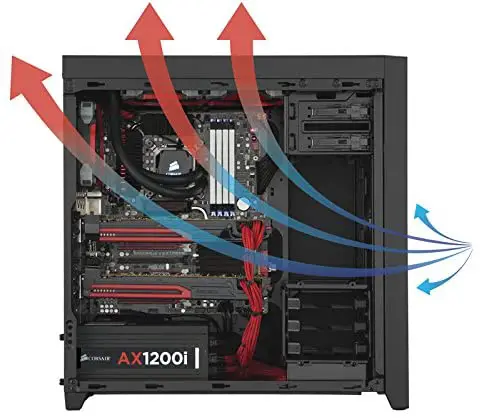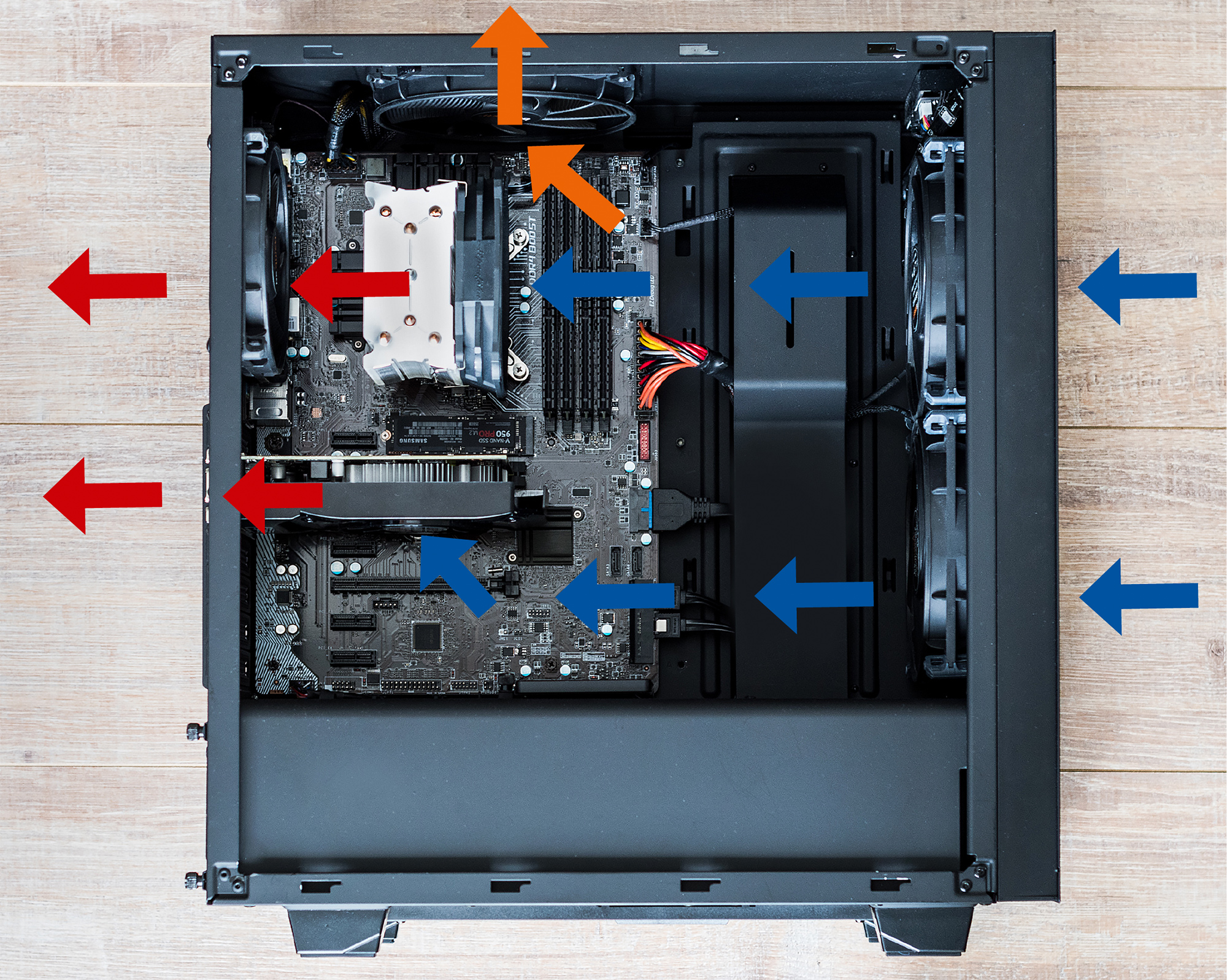

As such, you have to expand the intake vents to account for the extra intake.Ĭases Without Bottom Vents – In the rare event you are working with a case that does not have a bottom vent, you should install the fan facing upwards. However, you’ll have to contend with compromised heat dissipation as the air passing through the PSU will already be hot. Placing the fan facing upwards effectively adds another exhaust fan. Installing the fan facing upwards also negates the fan inlet's chances of ingesting the hot exhaust air, as happens when the inlet is facing downwards.
Best airflow direction for pc Pc#
You can still install the fan facing upwards, especially if you plan to place the PC on a surface that curtails the fan’s ability for intake, such as a carpet. A downward-facing fan will intake fresh air from the bottom through dust filters and expel hot air from the rear. When working with such a case, you can install the PSU fan facing up or down.

It's easier to build a cool and quiet system from the start than retroactively go back and try to make a noisy (and/or hot) system quiet with great temps.Cases With Bottom Vents – A bottom-mounted PSU layout with bottom vents is the most common layout for modern PC cases. If you plan ahead of time, you can make a super quiet and cool running system. It's never been easier to build a near-silent system, even with high performance gear. I regard low temps and low noise output to be two sides of the same coin, but I know that many seem to not mind loud systems and mainly just care about temps. With a few bucks worth of acoustic dampening material I can even hear myself think sometimes. The front fan is the exhaust, but has a bezel over it. Through unusual case design and careful component selection I have an almost silent system - but with overclocked CPU and GPUs. As an option, you can vent the top to release the heat rising from the GPUs, but I like the case because it has very little venting. The great part of this design is all the heat ends up in the top. The PSU mounts in the bottome front as well. The CPU is now at the bottom back of the case and with the rear fan acting as an intake and not exhaust, you get great CPU cooling. The motherboard is upside down, so that GPUs (In my case an axial fan gpu) faces towards the top. Consequently, you get inefficient operation from the PSU, whereby maximum power and efficiency are almost impossible to reach at temperatures exceeding 40☌ (as they are normally based on an operating environment of around 25☌.) The longevity of components inside the power supply also suffer.Īfter reading the charts of PSU placement and the GPU cooling diagrams, I'm even more convinced that my Lian Li PCA05-NB is a great solution. However, it also results in the power supply absorbing much of the waste heat generated by the graphics cards and processor.

Supposedly, this improves dissipation and prevents heat from building up. Air is sucked in from inside the chassis and then expelled. Older PC cases manufactured according to the ATX specification put the power supply just under the case's top. Otherwise, you're fighting the forces of convection, and possibly creating a situation where a screw or other loose part could fall into the power supply. You should go this route only with passively-cooled "silent" PSUs, so that the warm air can rise. Don’t install the PSU with its opening facing up in the chassis.


 0 kommentar(er)
0 kommentar(er)
